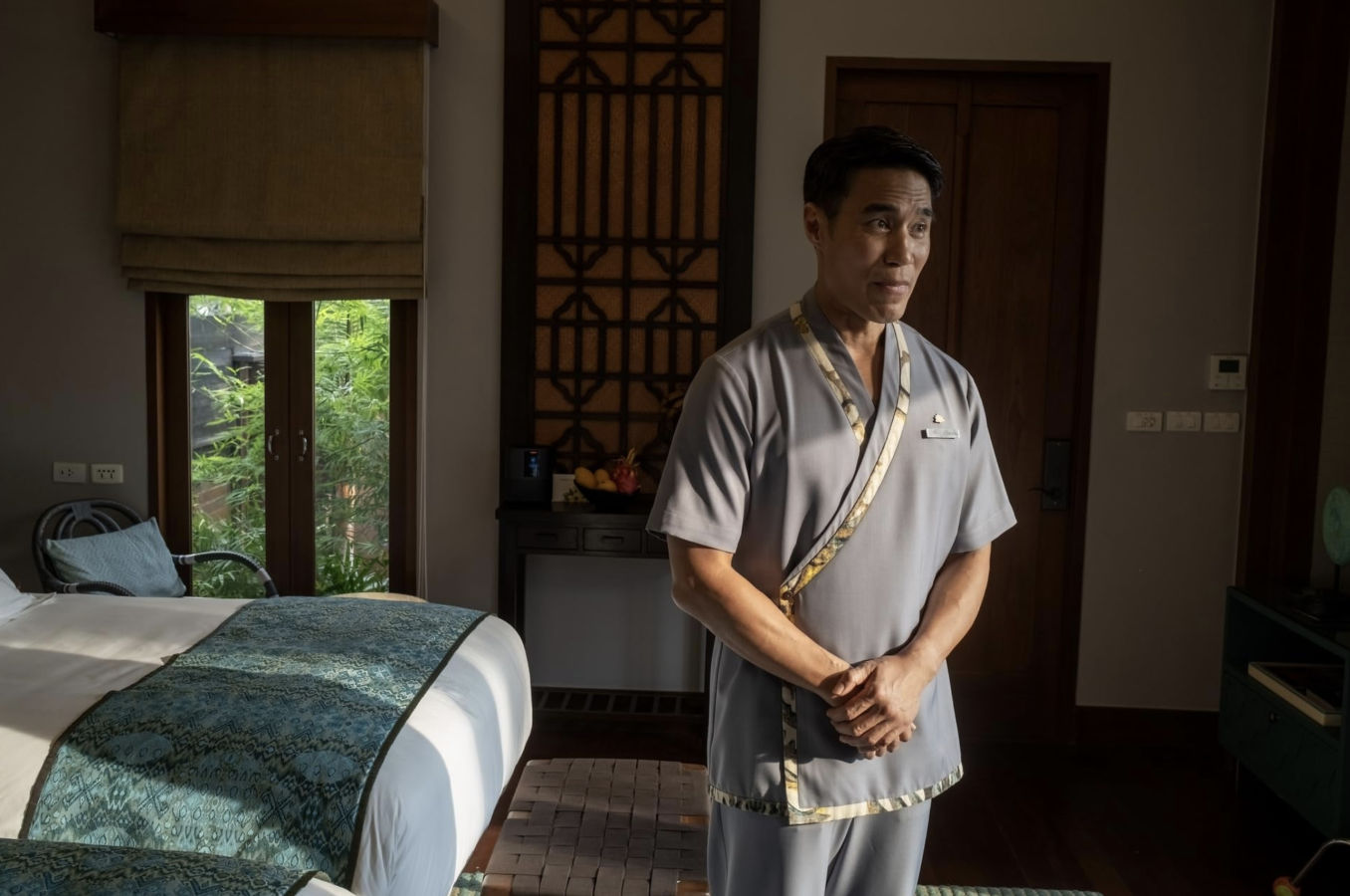Here’s what you need to know about Dom Hetrakul as he joins The White Lotus Season 3.
The brand new season of The White Lotus is almost upon us and fans are eagerly waiting for the first episode to drop. The third season of the hit show is set right here in Thailand with a majority of the filming done over in Koh Samui. The cast also includes some well-known Thai talents. Aside from Blackpink and Thailand’s very own Lisa Manoban making her acting debut, one of the Thai stars is Dom Hetrakul who hops on board the third season of The White Lotus.
[Hero image: Max]
What you need to know Dom Hetrakul to prepare for his appearance in The White Lotus Season 3

Dom Hetrakul has been in numerous projects here in Thailand. He’s a prominent face in many lakorn or Thai dramas on TV as well as numerous Thai movies. On top of that, he’s also made appearances in Hollywood films, even starring in one beside Nicolas Cage.
Hetrakul’s family is the owner of Daily News, a Thai language newspaper. He studied in Assumption University and Mahidol University, eventually graduating from Mahidol with a degree in Business Administration. After graduating, he began working as a model, presenter, and actor.
The list of Hetrakul’s local projects is long. He starred in a number of the King Nersuan movies and many TV dramas like The Sky Without the Sun and Tulip Thong. He’s also provided the Thai dub for iconic characters in Hollywood animated movies like Shrek and Batman.
Hetrakul has also starred in a number of Hollywood and international projects. He had supporting roles in movies like Sniper 3 and The Man With the Iron Fists 2. His most notable Hollywood movie is Bangkok Dangerous as a henchman that goes up against Joe, the protagonist played by Nicolas Cage.
The Thai actor is set to appear in the upcoming third season of The White Lotus, which premieres on February 17 here in Thailand. Details about his character and the plot have been kept under wraps. Judging from the trailer, it looks like his character is one of the spa specialists in The White Lotus resort here in Thailand who will be teaching Natasha Rothwell’s Belinda a few tips and tricks for her to bring back to Hawaii.
Aside from acting, Hetrakul is also the managing director of Britbike and Motorcycle Kingdom, companies which are responsible for importing motorbikes into Thailand.
Frequently Asked Questions
One of his notable Hollywood roles was a henchman in the movie 'Bangkok Dangerous' where he starred alongside Nicolas Cage.
A Thai movie called 'Crime King' in 1998.












